In the years preceding the pandemic, Australia was one of the world’s most popular destinations for international students.
It also had the highest concentration of international students in the world at around three times that of the UK and Canada, and six times that of the US:
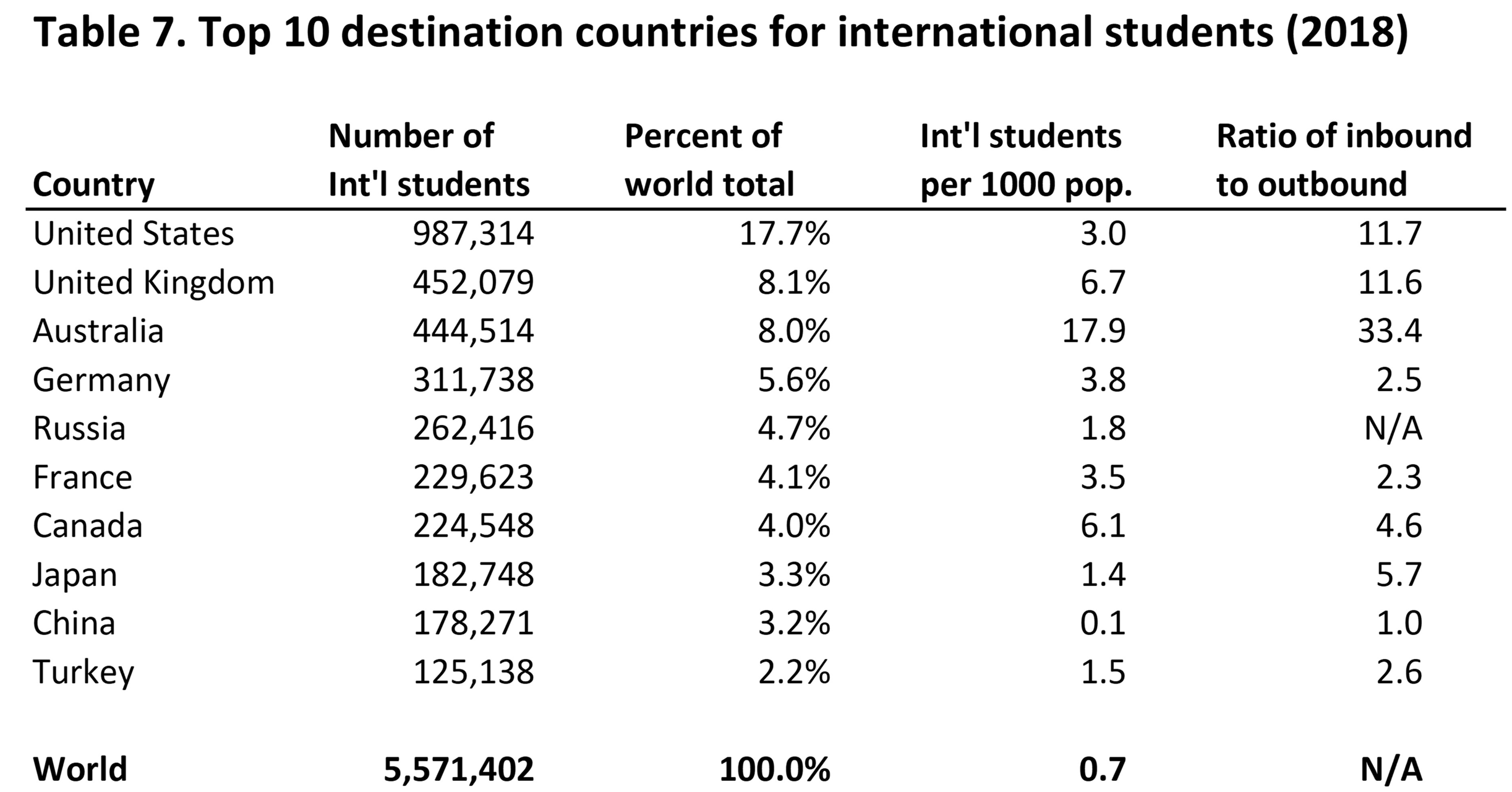
The number of international students studying in Australia hit a record high in October 2023, with 672.800 visas on issue:
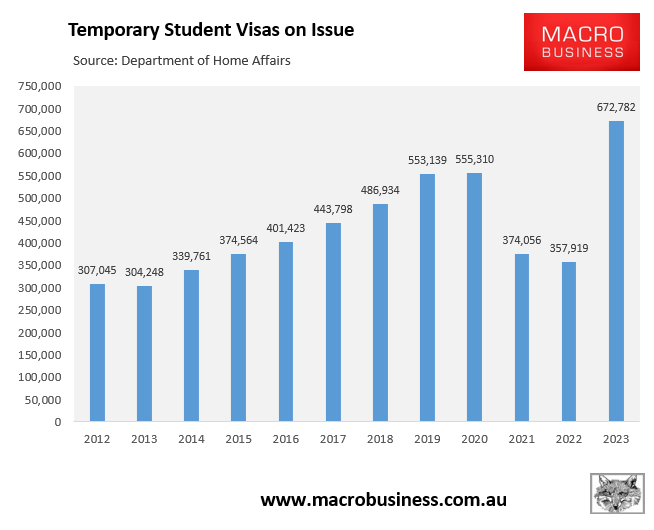
The number of graduate visas on issue also hit a record high 193,200 in October:

This means that around one in 30 people in Australia in October 2023 held one of these visas – an extraordinary number.
On New Year’s Day, The SMH reported that the University of Sydney’s revenue from international student fees topped $1.4 billion in 2022, which is higher than any other Australian university.
International students accounted for 78% per cent of Sydney University’s revenue from student fees, and 48% of its overall revenue.
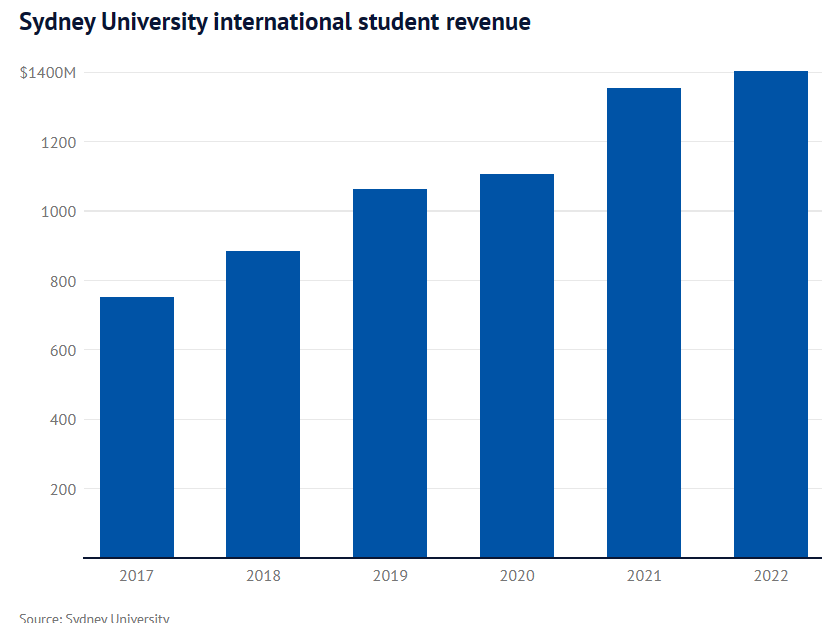
Vice-chancellor Mark Scott claims universities have become increasingly reliant on revenue from international students due to a lack of government and business investment in research.
“We value our international students, they are valued contributors, we love having them on campus, but I think there are many who would say the financial dependence on their contribution is not where it needs to be”, he said.
“The only way top Australian universities have been able to make the investments necessary for their research achievements is because of international students, so they are important”.
Scott added that Sydney University’s income from international students has been invested in a future fund, which can be used in the event of another downturn in overseas students.
Tellingly, the boom in international revenue follows record commission fees paid to education agents by top NSW universities:
“NSW public universities spent at least $147 million on the commissions last year, but students are largely in the dark on the portion of their tuition fees that go to the agents, prompting calls for regulation and transparency in the growing sector”, The SMH reported last month.
“About 76% of 2022 international student enrolments at universities came to Australia through education agents, according to the latest federal government data, up from 61% 10 years ago”.
“At the state’s largest educator of foreign students, Sydney University, the bill for agent fees was almost $51 million last year, a 58% increase over five years”, The SMH said.
The relationship between our universities’ reliance on international student fees, research and rankings has always been a ‘ponzi scheme’.
To cut a long story short, the federal government and universities in Australia devised a structure to encourage large volumes of full-fee paying overseas students by:
- The Australian government offering the most generous student visa work rights and permanent residency opportunities in the world; and
- Australian universities lowering entry and teaching standards.
The financial windfall from growing international student numbers was then piled into research aimed purely at propelling Australia’s institutions up global rankings, rather than areas that helped Australians.
Because a better international ranking enhances a university’s reputation and signifies quality, these rankings were then used by universities as a marketing tool to lift international student enrolments alongside justifying higher fees.
What a marvelous ponzi scheme for Australian universities: 1) bring in plane loads of international students. 2) pump the fee revenue into research. 3) achieve a high ranking. 4) use it to market for more international students. 5) rinse and repeat.
Meanwhile, Australia’s million-dollar university vice-chancellors and their greedy senior administrators treat students like cattle and pile them into crowded classrooms:
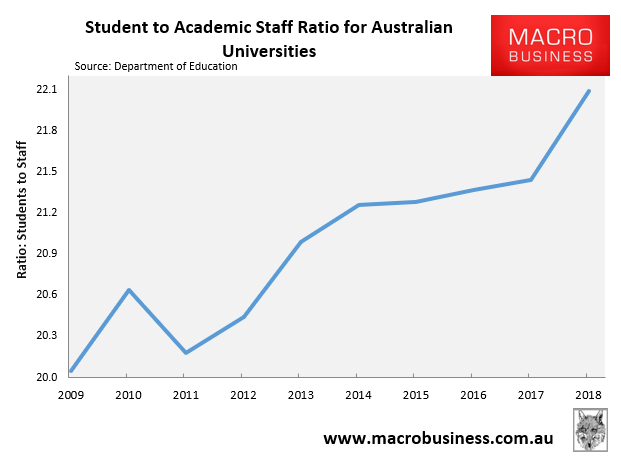
In turn, the actual experience of local students continues to degrade, as documented by The Australian last year, with the University of Sydney ranking especially poorly:
“Four of Australia’s large research universities are among the worst rated by undergraduate students for educational experience, with the universities of Sydney, Melbourne, NSW and Monash clustered near the bottom of the latest official survey”.
“The University of Sydney was given a positive rating by only 68.8% of its students in the federal government-backed survey, with the University of NSW only slightly better at 69.9%, the University of Melbourne at 71.8% and Monash University at 72.7%”.
Domestic students are required to help non-English speaking students complete their courses through group assignments.
Local students are paired with international students, which frequently results in domestic students completing the majority of the work, thereby becoming unpaid tutors and cross-subsidising international students’ grades.
Australia should aim for a much smaller intake of higher-quality students.
Universities and private colleges should also be stopped from privatising the gains from unprecedented volumes of international student enrolments while the costs are borne by Australians at large, especially renters struggling to find a home.
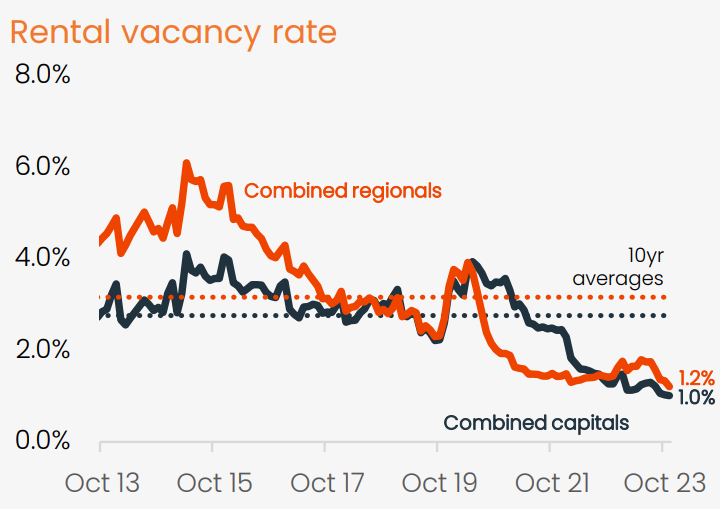
Running low-quality student visa mills for maximum throughput was never in the national interest.
Yet, we have created a system that rewards university vice-chancellors with million-dollar salaries for effectively turning their institutions into low-quality, high-volume migration agencies.
Moreover, instead of investing Sydney University’s income into a future fund, universities should be required to provide on-campus accommodation for international students in proportion to the number of enrolments.
This would take direct pressure off the rental market and ensure that the costs and benefits to universities and Australians from the international student trade are more aligned.
The federal government should also restrict the amount of finder fees and kickbacks that can be paid by institutions to education and migration agents, as well as implement a levy on international students.
Australian universities are non-profit organisations and currently do not pay tax (unlike other ‘export’ industries). This is despite universities acting like corporatised, profit-maximising businesses with senior leadership groups that get paid exorbitant salaries.
The universities, rather than taxpayers, are therefore ‘clipping the ticket’ and collecting the economic rents from Australia’s immigration system via student fees.
A levy would on international students would ensure that Australians receive a financial cut from the trade, similar to how a sovereign wealth fund collects revenue from mineral exports.
A levy is also good economics because: 1) their demand is very inelastic, and will not change their numbers much, and 2) universities are making unearned rents due to location and prospects for immigration, not effort.
Realistically, I see little prospect of the federal government lowering student numbers to sensible and sustainable levels, given the Albanese government last year signed two migration pacts with India with the explicit aim of boosting the number of Indians studying, living and working in Australia.

